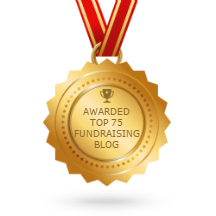Charitable giving in the USA reached a record high for the second year in a row, according to the newly released Giving USA 2016: The Annual Report on Philanthropy for the Year 2015, a publication of Giving USA Foundation, researched and written by the Indiana University Lilly Family School of Philanthropy.
While the news is good, storm clouds are gathering on the horizon. You need to hear both the good and the troubling news. I’ve tried to distill the most relevant, overarching information for you and provide you with some tips to help you be more successful moving forward. While I would normally advise against sharing lots of statistics, I nevertheless think you’ll appreciate these numbers.
 Researchers estimate that giving totaled $373.25 billion in 2015.
Researchers estimate that giving totaled $373.25 billion in 2015.
That new peak in contributions represents a record level whether measured in current or inflation-adjusted dollars. In 2015, total giving grew 4.1 percent in current dollars (4.0 percent when adjusted for inflation) over 2014.
The revised inflation-adjusted estimate for total giving in 2014 was $359.04 billion, with current-dollar growth of 7.8 percent, and an inflation-adjusted increase of 6.1 percent.
Charitable contributions from all four sources — individuals, charitable bequests, corporations, foundations — went up in 2015, with those from individuals once again leading the way in terms of total dollar amount, at $264.58 billion. This follows the historical pattern seen over more than six decades.
Giving to eight of the nine nonprofit categories studied grew with only giving to foundations declining (down 3.8 percent in current dollars, down 4.0 percent adjusted for inflation).
Giving to the category of International Affairs — $15.75 billion — grew the most (up 17.5 percent in current dollars, up 17.4 percent adjusted for inflation).
Giving to the category Arts/Culture/Humanities — $17.07 billion — grew the second most (up 7.0 percent in current dollars, up 6.8 percent adjusted for inflation).
While the numbers are terrific, the story is really about more than that. Giving USA Foundation Chair W. Keith Curtis, president of the nonprofit consulting firm The Curtis Group, says:
If you look at total giving by two-year time spans, the combined growth for 2014 and 2015 hit double digits, reaching 10.1 percent when calculated using inflation-adjusted dollars. But, these findings embody more than numbers — they also are a symbol of the American spirit. It’s heartening that people really do want to make a difference, and they’re supporting the causes that matter to them. Americans are embracing philanthropy at a higher level than ever before.”
While the 2015 giving news is certainly positive, there are four points that indicate that the good news might be short lived:
Slowing Growth Rate. The rate of growth in giving slowed in 2015. In 2014, we saw inflation-adjusted growth of 6.1 percent while the growth rate in 2015 was just 4.0 percent. We may be seeing the start of a new trend.
Correlation to GDP. Once again, charitable giving correlates to Gross Domestic Product. In both 2014 and 2015, giving stood at 2.1 percent of GDP. Since 2000, giving has been between 1.9 and 2.2 percent of GDP. In other words, when the overall economy grows, philanthropy grows; when the overall economic growth rate slows, so does philanthropic growth. With anemic GDP growth in 2016, we can expect anemic philanthropic growth unless the economy heats up in the second half of the year.
Decline in Volunteerism. In 2004, 28.8 percent of Americans volunteered. In the following decade, the percentage of Americans who volunteered dropped 12.2 percent, down to 25.3 percent of the population. While the percentage of Americans who volunteer remains good, the downward trend is worrisome. There is a correlation between volunteerism and giving. For example, people who volunteer but do not make current donations are more than twice as likely to make a charitable bequest gift as people who neither donate nor volunteer.
Tougher Competition for Donors. Between 2014 and 2015, the US saw a 6.0 percent increase in the number of 501(c)3 nonprofit organizations. That means that the 4.0 percent inflation-adjusted growth rate in philanthropy did not even keep pace with the growth rate of charitable organizations. In other words, fundraisers are facing greater competition for a pool of philanthropic resources that is not keeping pace with demand.
As we celebrate record giving in 2015, let’s keep an eye to the storm clouds gathering on the horizon. A bright future for philanthropy is not assured. We need to be prepared and, where we can, we need to be proactive.
Here are just three things you can do to help ensure your organization has the philanthropic resources necessary to fulfill its mission:
- Have a monthly giving program.
- Work on improving your organization’s donor retention rate.
- Start or grow your planned giving program. In 2015, 9 percent of charitable giving came through bequests. What percentage of contributions to your organization came from bequests? If it was less than 9 percent, you have some work to do in this area.
To purchase your copy of the full report, visit the Giving USA store by clicking here.
That’s what Michael Rosen says… What do you say?








